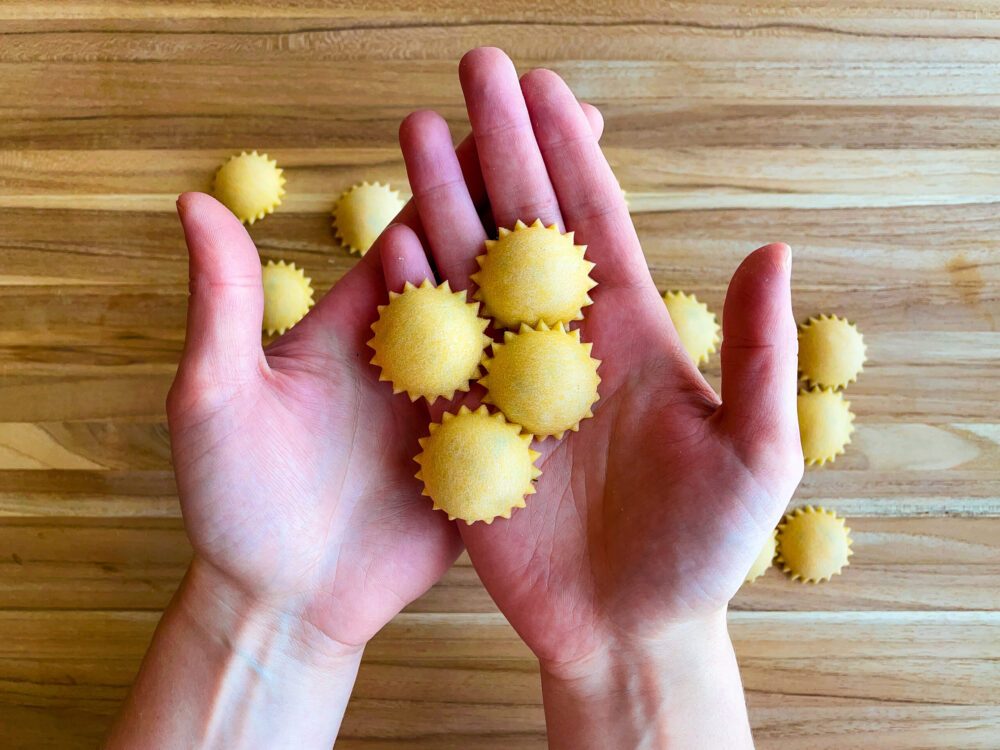
Three Tips for Making Better Anolini
|
|
Time to read 1 min
|
|
Time to read 1 min
Shaped like little sunbursts, anolini pasta is a truly cheerful shape to create. To make them, all you need is a pasta machine (or Italian rolling pin if that’s your jam), a small round pasta stamp , and a little bit of time. Unlike shapes like tortellini and cappelletti, anolini don’t require a lot of origami shaping or nimble fingers. Still, there are a few important things to note in order to make plump, perfect anolini every time.
Meaning “rings”, anolini are small, filled pasta circles hailing from Emilia-Romagna. Of course, in true Italian fashion, there are multiple variations and heated disputes about their exact origins.
One version from Piacenza, called anvëin in local dialect, is slightly smaller and crescent-shaped. Another version from Parma, known as anolén, are circle-shaped, often with serrated edges.
Traditionally anolini are served brodo style, filled with a mixture of beef or pork then ladled into a rich meat broth. It’s a hearty and warm dish, similar to its cousins, tortellini and cappelletti in brodo. Nowadays it’s not uncommon to see anolini served in other ways, from anolini fritti (fried) to anolini estivi (summer anolini prepared with tomatoes, mozzarella, and fresh basil).
Before adding the filling, gently press the anolini stamp across your pasta sheet to create an outline (you don’t want to cut through the dough, just create light markings). This will help guide where your filling goes.
Just before sealing, use a spray bottle filled with water to lightly mist your pasta sheet. This will help seal the dough together. Conversely, dust the other sides of your pasta sheet with a bit of four to help prevent them from sticking to your work surface.
When pressing the anolini stamp over each heap of filling, you may notice some of the filling broaches the edges. That’s okay! It’ll still seal the pasta. It’s better to have plump, full anolini, than deflated ones with air pockets inside (which might explode when cooking).
Snag a brass anolini stamp from our shop, then try your hand at making anolini pasta from scratch with these two recipes!
For more tips on making stuffed pasta shapes, check out our guide with 8 tips for making filled pasta.

